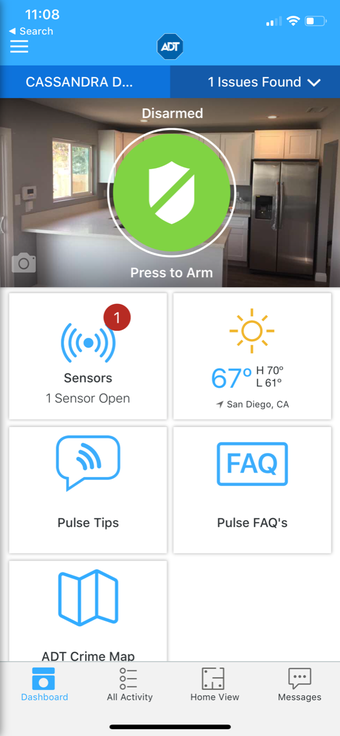Does a Smart Home save you money?

Here is a great article from Brandon Doyle for Realtor Magazine that will answer the question.
Smart-home technology offers entertainment, convenience, and peace of mind, but did you know that it can help lower energy bills and save homeowners money? The average owner spends about $2,000 on energy costs every year, according to Energy Star. By adding just a handful of cost-effective devices, homeowners can save between 20% and 30% on their energy bills. Here are a few key smart home products.
1. Thermostats
Nearly half of a typical utility bill goes towards heating and cooling. Installing a smart thermostat can save about 10% a year, according to the U.S. Department of Energy. This is achieved by adjusting the HVAC system while away from home. They can be set to a schedule, controlled remotely, and react to information via sensors and the weather forecast. Advanced smart thermostats such as Ecobee 4 have additional occupancy and temperature sensors that can be installed through out the home and geofencing capability to know when you’re away. Advanced users can pair their thermostat with connected shades and fans to save even more money. According to American Council for an Energy-Efficient Economy, 11 percent of households have already installed a smart thermostat, making them the most popular smart energy-saving device. Many utility companies even offer rebates of $50 to $100 for installing one.
2. Smart Switches, Sensors & Bulbs
Leaving lights on when not in use can be a major drain on your energy bill; about 25% of utility costs are spent on lighting. Devices such as smart switches, room sensors, and smart bulbs can help ensure lights aren’t being left on. These have the potential to save 7% to 27% of a home’s overall lighting energy use, according to study by American Council for an Energy-Efficient Economy. However, the amount of energy savings for Wi-Fi connected devices is sometimes offset by the power used to control them. Look for devices that use low-power communication such as Z-Wave, ZigBee, or a proprietary network like Lutron. Smart switches cost around $50 and bulbs range from $15 to $40 each—they’re often sold in a kit, which includes the required hub.
3. Energy Monitoring
By Installing an energy monitoring system such as Sense, homeowners can identify appliances that are quietly adding to the monthly utility bills. The Sense monitor is installed in electrical panel, connected to Wi-Fi, and viewable in real time via a smartphone app. The device automatically detects items in the home in order to identify vampire loads and see how much they’re costing. I use this device, and within a week of installing it, I determined the my computer, TV, and DVR were costing me a lot of money when not in use. I’m now more mindful to turn my computer off when it’s not in use and I’ve have installed a smart power strip to reduce the idle power consumption of our home entertainment systems. Advanced users can take advantage of integrations with Alexa, Google, IFTTT, TP-Link, and Phillips Hue to setup additional energy-saving automation. Sense will help homeowners form better habits, identify problem appliances, and reduce always-on device consumption hat may account for up to 20% of energy use.
4. Smart Plugs
Instead of powering down completely, many modern household electronics enter standby mode and continue to draw power even when not in use. This allows them to continue to communicate with other devices, get updates, and load faster. However, this is a complete waste if you’re not around to use them. Watch out for new smart TVs, gaming systems, DVRs, and computers—often the biggest culprits. Smart plugs, outlets, and power strips enable you to cut the power completely when they’re not in use, and some even allow you to monitor energy usage, such as the Fibaro Wall Plug with Z-Wave Plus
5. Smart Sprinkler System
Have you ever been out walking the dog or driving around town in the rain and noticed sprinkler systems running and thought, “What a waste!”? Rachio can help homeowners save money on water bills by creating custom schedules that automatically adjust for local weather and can be monitored via smartphone. Available integrations allow owners to control water by voice, set up automations, and avoid turning sprinklers on when someone is outside. The optional wireless flow meter helps detect leaks, alerts the user, and can even remove that specific zone while continuing to water the rest of the yard.
Smart-home technology is becoming more widely accepted, but still struggles to overcome up-front costs, perceived complexity, and reliance on internet connectivity. Mitchell Klein, executive director of the Z-Wave Alliance, points out that this technology has had a difficult time overcoming mainstream consumer hurdles. “I think there is a lot of value in helping buyers understand how a smart home can work in everyday situations and benefit their life,” Klein says. “It’s imperative that home buyers understand that a smart home can be easy, and it can also be secure.”
If you are looking to move to a “Smart Home” in La Jolla /San Diego, call or text me at 619.980.2738. And let’s have a conversation.
